Evaluation of Subsidy Programmes
This research group focuses on two main research questions: (i) What is the causal effect of cooperative innovation activities on the performance of firms and regions? (ii) What are the causal effects of public Research and Development (R&D) support schemes on the performance of firms and regions? The first research question concerns the dynamics of firms and regions as a result of their different innovation activities. We apply a micro-based integrative perspective on innovative activities which allows identifying causal effects of cooperative activities on specific outcomes (e. g., patent applications, scientific publications, employment growth, or productivity growth). Concerning the second research question, recent studies mainly focus on the evaluation of one specific subsidy scheme. Research in this group aims to overcome this shortcoming by considering various support schemes. Indicators for the firms’ success are (amongst others) patent applications and employment growth. The results allow insights for the future design of innovation support schemes.
Centre for Evidence-based Policy Advice (IWH-CEP)
Research Cluster
Economic Dynamics and StabilityYour contact

Mitglied - Department Präsidialbereich
EXTERNAL FUNDING
09.2019 ‐ 09.2022
Establishing Evidence-based Evaluation Methods for Subsidy Programmes in Germany (EVA-KULT)
European Regional Development Fund (ERDF)
The project aims at expanding the Centre for Evidence-based Policy Advice at the Halle Institute for Economic Research (IWH-CEP).
01.2018 ‐ 12.2020
Networked growth - Innovative Saxony-Anhalt through digital business models (Competence Center 4.0)
Federal Ministry for Economic Affairs and Energy (BMWI)
01.2017 ‐ 12.2018
Political Participation in Eastern Germany
Federal Ministry for Economic Affairs and Energy (BMWI)
12.2015 ‐ 11.2018
Socio-economic Effects of Research on Innovative Approaches for POC Diagnostics
Federal Ministry of Education and Research (BMBF)
Part of the EXASENS project. Coordinated by the Leibniz Institute of Photonic Technology (IPHT) in Jena, nine Leibniz institutes are working together on researching point-of-care (POC) technology for the prediction and diagnosis of chronic inflammatory respiratory diseases. See press release.
02.2017 ‐ 02.2018
The Importance of Non-University Research Institutions for the Development of Firms and Regions (Be_For_Reg-Projekt)
Federal Ministry of Education and Research (BMBF)
01.2015 ‐ 12.2016
Evaluation of the "Joint Task 'Improving the Regional Economic Structure'" in the Federal State of Saxony-Anhalt
Investitionsbank Sachsen-Anhalt
Refereed Publications
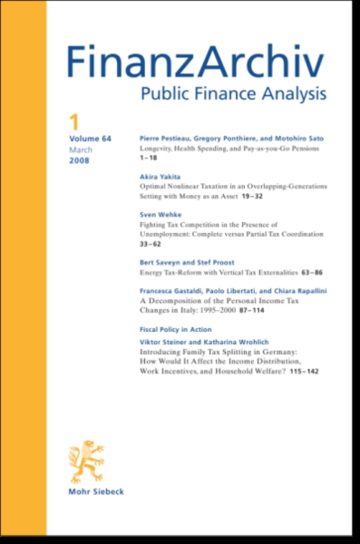
The Efficiency of Local Public-service Production: The Effect of Political Institutions
in: FinanzArchiv, No. 2, 2018
Abstract
Reforms replacing municipal cooperations by centralized municipalities often aim at increasing municipal efficiency. Empirical evidence supporting this aim, however, is ambiguous. Our paper analyzes the effect of institutions on municipal efficiency. In particular, we distinguish two archetypal institutional settings, a centralized and a confederal one, and argue that bureaucrats in a centralized setting are able to increase the fiscal residual. Our empirical test case is the German federal state of Saxony-Anhalt. We test the effect of the institutional setup using the bootstrap approach suggested by Simar and Wilson (2007), concluding that a decentralized institutional setting improves the efficiency of municipal production.
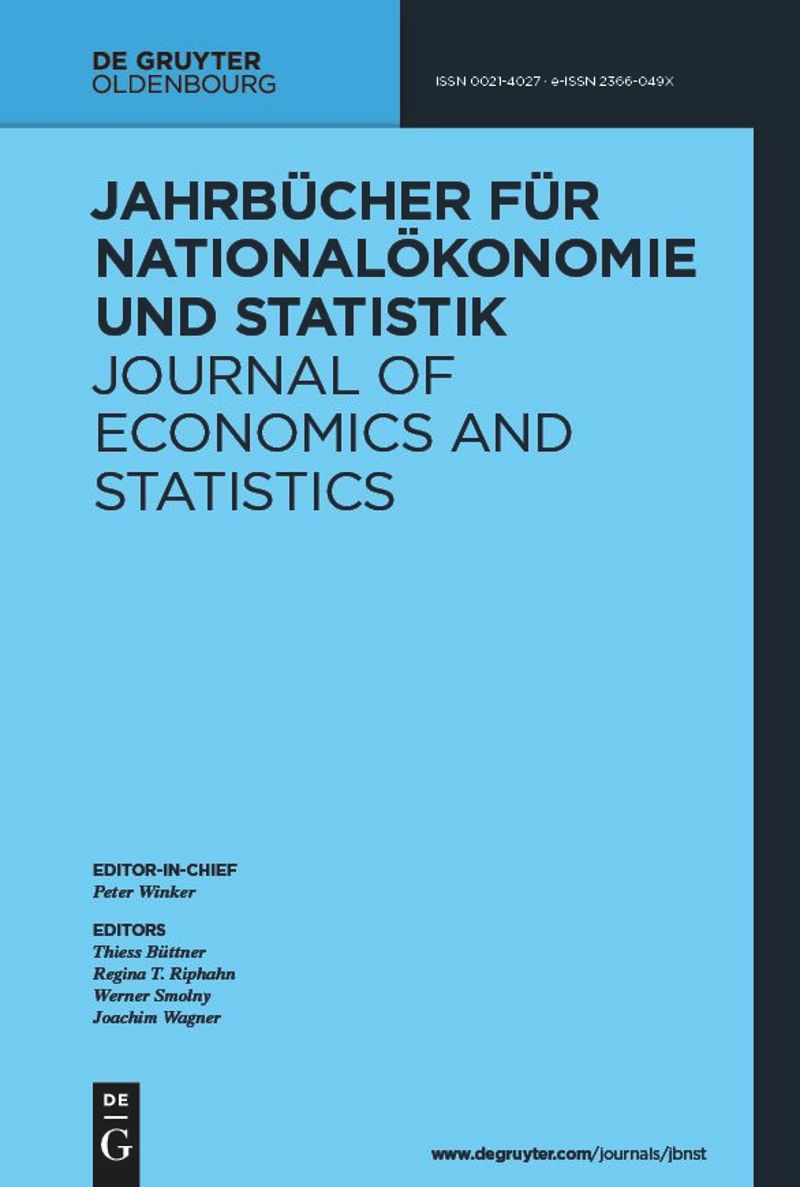
Public Investment Subsidies and Firm Performance – Evidence from Germany
in: Jahrbücher für Nationalökonomie und Statistik, No. 2, 2018
Abstract
This paper assesses firm-level effects of the single largest investment subsidy programme in Germany. The analysis considers grants allocated to firms in East German regions over the period 2007 to 2013 under the regional policy scheme Joint Task ‘Improving Regional Economic Structures’ (GRW). We apply a coarsened exact matching (CEM) in combination with a fixed effects difference-in-differences (FEDiD) estimator to identify the effects of programme participation on the treated firms. For the assessment, we use administrative data from the Federal Statistical Office and the Offices of the Länder to demonstrate that this administrative database offers a huge potential for evidence-based policy advice. The results suggest that investment subsidies have a positive impact on different dimensions of firm development, but do not affect overall firm competitiveness. We find positive short- and medium-run effects on firm employment. The effects on firm turnover remain significant and positive only in the medium-run. Gross fixed capital formation responses positively to GRW funding only during the mean implementation period of the projects but becomes insignificant afterwards. Finally, the effect of GRW-funding on labour productivity remains insignificant throughout the whole period of analysis.

Does Intermunicipal Cooperation Increase Efficiency? A Conditional Metafrontier Approach for the Hessian Wastewater Sector
in: Local Government Studies, No. 1, 2018
Abstract
This paper analyses the relationship between intermunicipal cooperation and efficiency of public service provision. Organisational arrangements of public service production, including self-provision, joint provision or contracting, affect incentives and internal transaction costs. Hence, cooperation gains from scale effects need to be balanced against technical inefficiencies. We analyse relative efficiency of wastewater disposal for German municipalities. We employ a conditional analysis in conjunction with a metafrontier approach to calculate relative efficiency measures and technology gap ratios controlling for organisational arrangements and further environmental variables. Jointly providing municipalities and contractor municipalities exhibit lower technical efficiency than self-providing and contracting municipalities. As confirmed by previous research, scale effects from cooperation and contracting apply to small municipalities primarily.
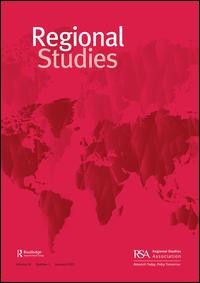
R&D Collaborations and the Role of Proximity
in: Regional Studies, No. 12, 2017
Abstract
R&D collaborations and the role of proximity. Regional Studies. This paper explores the impact of proximity measures on knowledge exchange measured by granted research and development (R&D) collaboration projects in German NUTS-3 regions. The results are obtained from a spatial interaction model including eigenvector spatial filters. Not only geographical but also other forms of proximity (technological, organizational and institutional) have a significant influence on the emergence of collaborations. Furthermore, the results suggest interdependences between proximity measures. Nevertheless, the analysis does not show that other forms of proximity may compensate for missing geographical proximity. The results indicate that (subsidized) collaborative innovation activities tend to cluster.
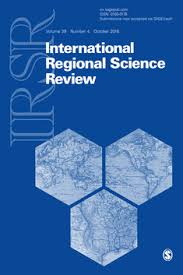
Benchmark Value-added Chains and Regional Clusters in R&D-intensive Industries
in: International Regional Science Review, No. 5, 2017
Abstract
Although the phase of euphoria seems to be over, policy makers and regional agencies have maintained their interest in cluster policy. Modern cluster theory provides reasons for positive external effects that may accrue from interaction in a group of proximate enterprises operating in common and related fields. Although there has been some progress in locating clusters, in most cases only limited knowledge on the geographical extent of regional clusters has been established. In the present article, we present a hybrid approach to cluster identification. Dominant buyer–supplier relationships are derived by qualitative input–output analysis from national input–output tables, and potential regional clusters are identified by spatial scanning. This procedure is employed to identify clusters of German research and development-intensive industries. A sensitivity analysis reveals good robustness properties of the hybrid approach with respect to variations in the quantitative cluster composition.
Working Papers
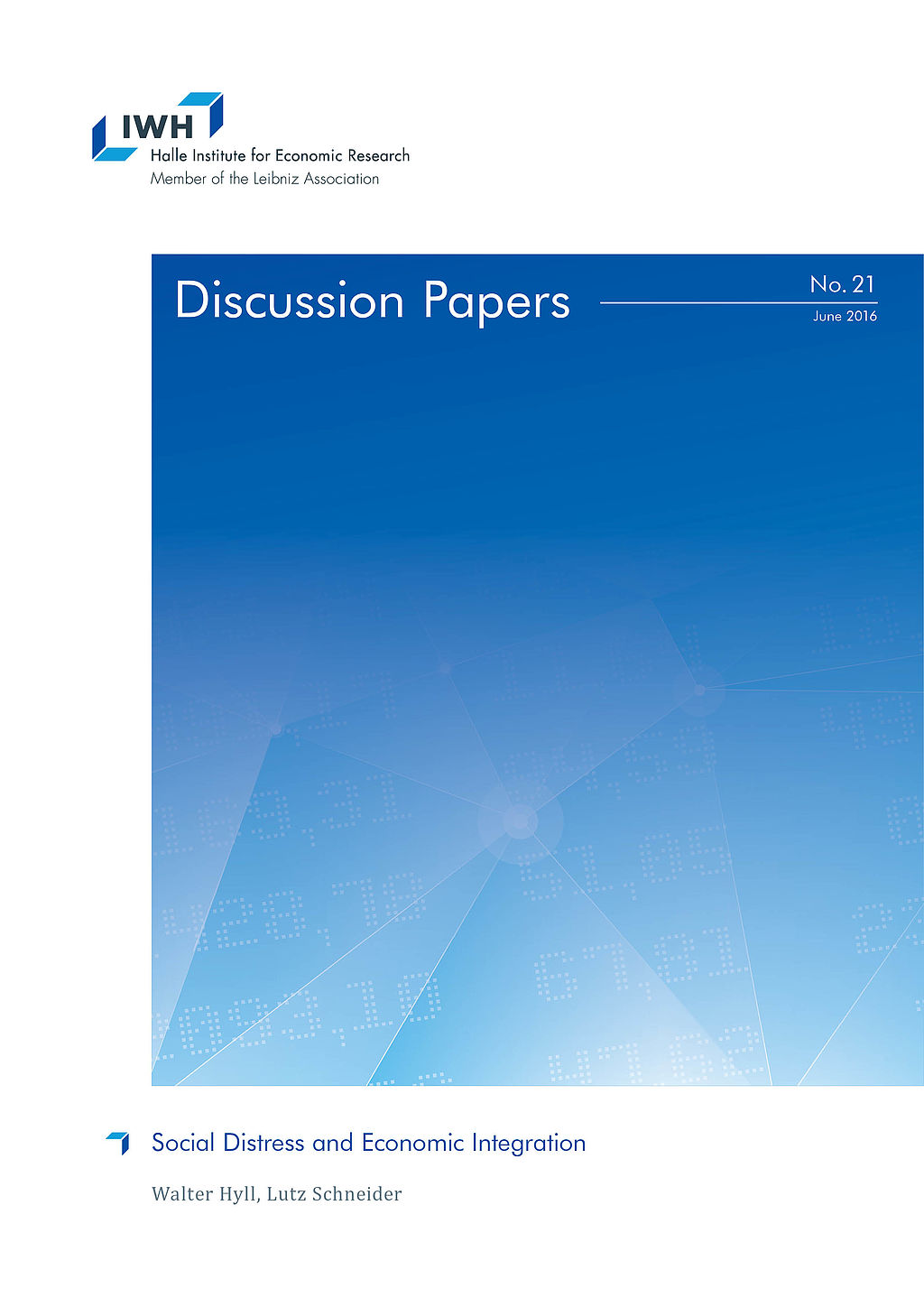
Do Manufacturing Firms Benefit from Services FDI? – Evidence from Six New EU Member States
in: IWH Discussion Papers, No. 5, 2015
Abstract
This paper focuses on the effect of foreign presence in the services sector on the productivity growth of downstream customers in the manufacturing sector in six EU new member countries in the course of their accession to the European Union. For this purpose, the analysis combines firm-level information, data on economic structures and annual national input-output tables. The findings suggest that services FDI may enhance productivity of manufacturing firms in Central and Eastern European (CEE) countries through vertical forward spillovers, and thereby contribute to their competitiveness. The consideration of firm characteristics shows that the magnitude of spillover effects depends on size, ownership structure, and initial productivity level of downstream firms as well as on the diverging technological intensity across sector on the supply and demand side. The results suggest that services FDI foster productivity of domestic rather than foreign controlled firms in the host economy. For the period between 2003 and 2008, the findings suggest that the increasing share of services provided by foreign affiliates enhanced the productivity growth of domestic firms in manufacturing by 0.16%. Furthermore, the firms’ absorptive capability and the size reduce the spillover effect of services FDI on the productivity of manufacturing firms. A sectoral distinction shows that firms at the end of the value chain experience a larger productivity growth through services FDI, whereas the aggregate positive effect seems to be driven by FDI in energy supply. This does not hold for science-based industries, which are spurred by foreign presence in knowledge-intensive business services.

Isolation and Innovation – Two Contradictory Concepts? Explorative Findings from the German Laser Industry
in: IWH Discussion Papers, No. 1, 2015
Abstract
We apply a network perspective and study the emergence of core-periphery (CP) structures in innovation networks to shed some light on the relationship between isolation and innovation. It has been frequently argued that a firm’s location in a densely interconnected network area improves its ability to access information and absorb technological knowledge. This, in turn, enables a firm to generate new products and services at a higher rate compared to less integrated competitors. However, the importance of peripheral positions for innovation processes is still a widely neglected issue in literature. Isolation may provide unique conditions that induce innovations which otherwise may never have been invented. Such innovations have the potential to lay the ground for a firm’s pathway towards the network core, where the industry’s established technological knowledge is assumed to be located. The aim of our paper is twofold. Firstly, we propose a new CP indicator and apply it to analyze the emergence of CP patterns in the German laser industry. We employ publicly funded Research and Development (R&D) cooperation project data over a period of more than two decades. Secondly, we explore the paths on which firms move from isolated positions towards the core (and vice versa). Our exploratory results open up a number of new research questions at the intersection between geography, economics and network research.

Does Proximity Matter in the Choice of Partners in Collaborative R&D Projects? – An Empirical Analysis of Granted Projects in Germany
in: IWH Discussion Papers, No. 12, 2014
Abstract
This paper contributes to the discussion on the importance of physical distance in the emergence of cross-region collaborative Research and Development (R&D) interactions. The proximity theory, and its extensions, is used as a theoretical framework. A spatial interaction model for count data was implemented for the empirical analysis of German data from the period from 2005 to 2010. The results show that all tested proximity measurements (geographical, cognitive, social and institutional proximity) have a significant positive influence on collaboration intensity. The proximity paradox, however, cannot be confirmed for geographical, social and institutional proximity, but for cognitive proximity.

Is Subsidizing Companies in Difficulties an Optimal Policy? An Empirical Study on the Effectiveness of State Aid in the European Union
in: IWH Discussion Papers, No. 9, 2014
Abstract
Even though state aid in order to rescue or restructure ailing companies is regularly granted by European governments, it is often controversially discussed. The aims for rescuing companies are manifold and vary from social, industrial and even political considerations. Well-known examples are Austrian Airlines (Austria) or MG Rover (Great Britain). Yet, this study aims to answer the question whether state aid is used effectively and whether the initial aim why aid has been paid has been reached, i.e. the survival of the company. By using data on rescued companies in the EU and applying a survival analysis, this paper investigates the survival rates of these companies up to 15 years after the aid has been paid. In addition, the results are compared to the survival rates of non-rescued companies which have also been in difficulties. The results suggest that despite the financial support, business failure is often only post-poned; best survival rates have firms with long-term restructuring, enterprises in Eastern Europe, smaller firms and mature companies. However, non-funded companies have an even higher ratio to go bankrupt.
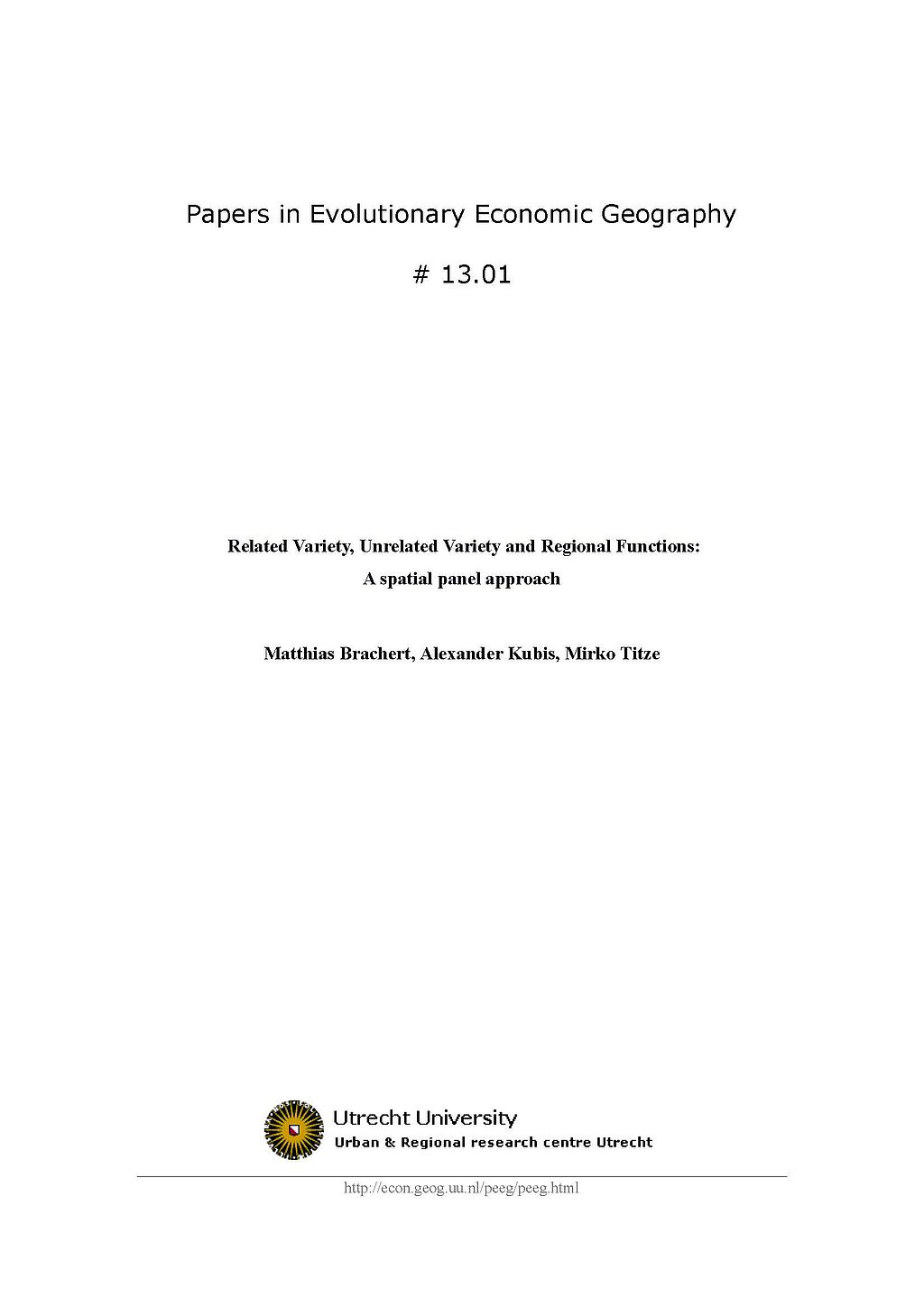
Related Variety, Unrelated Variety and Regional Functions: A spatial panel approach
in: Papers in Evolutionary Economic Geography, 2013
Abstract
The paper presents estimates for the impact of related variety, unrelated variety and the functions a region performs in the production process on regional employment growth in Germany. We argue that regions benefit from the existence of related activities that facilitate economic development. Thereby the sole reliance of the related and unrelated variety concept on standard industrial classifications (SIC) remains debatable. We offer estimations for establishing that conceptual progress can be made when the focus of analysis goes beyond solely considering industries. We develop an industry-function based approach of related and unrelated variety and test our hypothesis by the help of spatial panel approach. Our findings suggest that related variety as same as unrelated variety facilitate regional employment growth in Germany. However, the drivers behind these effects do differ. While the positive effect of related variety is driven by high degrees of relatedness in the regional “R&D” and “White-Collar”-functions, the effects of unrelated variety are spurred by “Blue Collar”-functions in this period.














